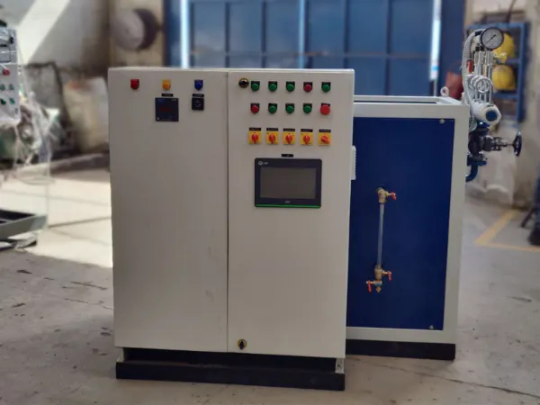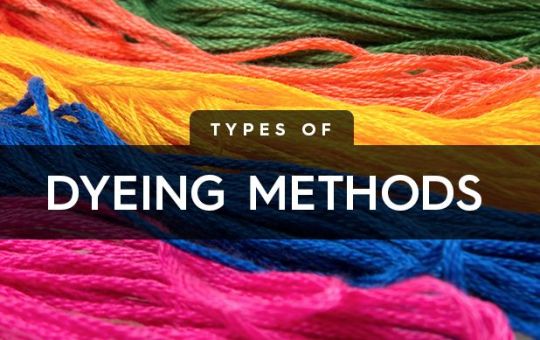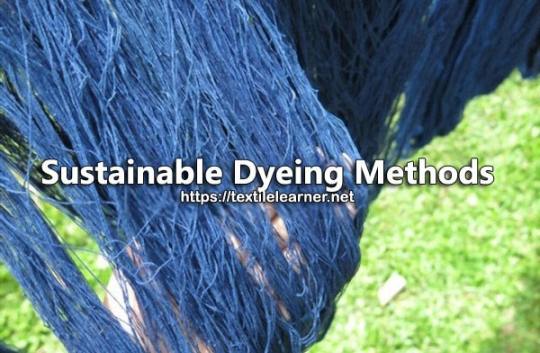#DyeingProcess
Explore tagged Tumblr posts
Text
Powering Garment Manufacturing with Industrial Electric Boilers | Thermodyne Boilers
In the fast-paced world of garment production, precision steam is key to perfect fabric finishing, pressing, and dyeing. Thermodyne’s Industrial Electric Boilers deliver clean, consistent steam—while helping factories cut down on energy costs and harmful emissions.
🌱 Eco-Friendly Operation 🎯 Uniform Steam for Quality Finishing 💸 Lower Maintenance & Energy Bills
Upgrade your garment plant with smarter, sustainable steam solutions from Thermodyne Boilers—where innovation meets efficiency.
🔗 Discover more: https://thermodyneboilers.com/electra-electrode-type-boilers/
Contact us for more: +91-9990226006

#GarmentIndustry#ElectricBoiler#FabricFinishing#SustainableManufacturing#SteamSolutions#ThermodyneBoilers#DyeingProcess#EcoBoiler#TextileTech#IndustrialBoilers
0 notes
Photo

Poussins d’indigo
TRAVEL - Vietnam, Cat Cat
photographie argentique
© crédits photographie Nadège Lecomte 2019 - All rights reserved
#nadègelecomte#silver photography#film is not dead#film photography#vietnam#north vietnam#sapa#catcat#travel#travelvietnam#locallife#inthestreets#indigo#darkblue#dyeing#dyeingprocess
3 notes
·
View notes
Photo

It’s Dye Day. This is how a Dinokitty begins. I do small-batch dyeing every couple weeks normally. This color was a mix of aquamarine, sunshine orange, neon yellow, dark brown and apple green. It takes a while to learn how the different pigments react with one another, which ones are dominant and how different fibers (rougher roving vs. soft top-combed wool) take color. I usually dye several different strains of wool with ever lengthening soak times to get all the shades I’ll need for a finished Dinokitty 💕🐱🦖💕 #womenofwool #needlefelting #dyeingprocess #dyeingwool #mabgraves #dinokitty #dinokitty™️ #dyeday
11 notes
·
View notes
Text
Fabric Dyeing Services

Dyeing is applying dyes or pigments on textile materials such as fibers, yarns, and fabrics to achieve colour with the desired colour fastness. Dyeing is usually done in a unique solution containing dyes and particular chemical materials, depending on the type of dye.
TYPES OF DYEING AND PRINTING WITH THEIR INNOVATIONS
The different methods include fixing dye molecules to the fiber by diffusion, absorption, or bonding, with time and temperature being key controlling factors. The power of the bond between fiber and dye molecule depends on the dye used. Dyeing and printing are distinct applications; in printing, we apply colour to a localized area with desired patterns. In dyeing, we apply it to the entire textile.
The primary source of the dye
Historically, it has been nature, with the dyes being extracted from plants or animals. Since the mid of the 19th era, however, humans have produced artificial dyes to accomplish a broader variety of colours and to render the dyes more established to washing and general use. We use distinct classes of dyes for various fiber types and at different stages of the textile production procedure, from loose fibers through yarn and cloth to complete garments.
Acrylic fibers are dyed with basic dyes.
While we dye nylon and protein fibers such as wool and Silk with acid dyes, dispersed dyes are usually used with polyester. Cotton can be dyed with different dyes, including vat dyes and modern synthetic reactive and direct dyes.
CLASS OF DYE
The different classes of dyes that can be used and the fabrics they are suited best for.
Reactive dye
Reactive dye is a commonly used dye in the textile industry. Naturally, it is a highly coloured organic substance and it's colour fastness properties are outstanding. Usually, reactive dyes apply to cotton, Silk, wool, linen, and viscose.
Disperse Dye
Disperse dye is another common dye used for textile and garments. Disperse dyes were initially developed for the dyeing of cellulose acetate and water insoluble. Commonly, it can be used for dyeing nylon, cellulose acetate, polyester and acrylic fiber. One thing to note is that the dyeing temperature is higher and requires more pressure for the dye bath.
Direct Dye
This is generally used to dye cotton fibers or cotton fabrics. The popular sector of dye is mixed in all-purpose dyes with Acid dyes, the colour fastness property is usually improved after the dyeing treatment is completed.
METHODS OF DYEING
There are different ways to dye the materials that make up our clothes. Read on to find out the different methods of dyeing fabrics.
Direct Dyeing
Direct dyeing is putting dye directly on textiles without the use of an affixing agent. This method uses both natural and synthetic dyes for this process. Top Dyeing
In this method, we remove the short threads before the dyeing process. Top refers to the long fibers of wool from which the short ones were removed and used for beaten yarn.
Yarn Dyeing
As its name suggests, yarn dyeing puts colour into yarn before it is woven or knitted into fabrics.
Package dyeing
Package dyeing occurs while we wind the yarn on a small spool or tube, referred to as the package. Several yarn packages can fit into a dyeing machine at once, which makes the process less expensive.
Phases of the dyeing process Absorption of the dye occurs on the fiber’s surface where the dye molecules migrate from the liquid phase (dye solution) to the stable level (fiber). The fiber surface here is understood not only as the visible outer surface of the fiber but also as the surface of the pores which may penetrate deep into the interior of the fiber. To a large degree, this stage determines the uniformity of the colour of the end-use product.
The molecular diffusion of the dye is a result from the surface of the fiber to the interior of the fiber. This is a slow operation, which can be increased by increasing the temperature of the dye solution. Higher temperature also tends to increase the swelling of fiber.
The Fixation of dye occurs as a result of the creation of bonds between dye molecules and fiber molecules. The stability of the fixing depends on the type of bond that have been formed.
The fabric dyeing industry continues to make strides in developing technologies that make the processes more environmentally friendly and sustainable. Dyeing the yarn or fabric is more saturating and permanent then painting and last through many wearing and washings. Now that you have a guided look on how textiles are dyed, you can go ahead and contact a manufacturer to source you the right fabrics for your clothing line. Get in touch with the Always Trendin team to see if they can source a particular colourway that your clothing line needs.
0 notes
Video
youtube
"Creating Stunning Grey and Chocolate Brown with Natural Dyeing on Organ...
"Creating Stunning Grey and Chocolate Brown with Natural Dyeing on Organic Cotton Fabric"
"Welcome to our channel! In this video, we will show you through the fascinating process of natural dyeing, where we'll be using organic cotton fabric to achieve a gorgeous grey & chocolate brown color. 🌿🍫 Join us as we explore the ingredients needed for this enchanting dyeing journey: myrobalan, iron water, jaggery, and pomegranate, madder . 🍃✨ Discover the beauty of sustainable fashion and learn how to create stunning, nature-inspired hues with this process. Let's dive in and embrace the world of natural dyeing together & unlock the secrets of nature's palette and create something truly unique and beautiful!🌱💫 #NaturalDyeing, #OrganicCotton, #SustainableFashion, #DIYProject, #ChocolateBrown, #NatureInspired, #GreenLiving, #EcoFriendly, #NaturalColor, #ArtOfNature, #Handmade, #DyeingProcess, #Crafting
0 notes
Text
List of Checking and Control Points of Dyeing Process
List of Checking and Control Points of Dyeing Process #dyeing #dyeingprocess #dyeingparameters #checkingpointsindyeing #controlpointsindyeing #dyeingoperation
Checking and Control Points of Dyeing: Dyeing is a method which imparts beauty to the textile by applying various colors and their shades on to a fabric. Dyeing can be done at any stage of the textile manufacturing, such as fiber, yarn, fabric or a finished textile product including garments and apparels. It is one of the complex processes in textile industry. So, dyeing textile materials is…

View On WordPress
1 note
·
View note
Photo

this morning in Hell's kitchen (this is what the show should be like) - dyeing tanks #maudenibelungen #knitwear #dyeingprocess
9 notes
·
View notes
Photo

Interesting view from the dyepot: you can even see some steam swirling around. 😀 #dyeiscastyarns #dyeingprocess #dyepotmagic #ilovewhatido #handdying #behindthescenes
0 notes
Text
Methods of Dyeing | Different Types of Dyeing Methods
Methods of Dyeing | Different Types of Dyeing Methods #dyeingmethod #dyeingmethods #dyeingprocess #dyeingtechnique #yarndyeing #garmentdyeing #fabricdyeing #piecedyeing #stockdyeing #hankdyeing #spacedyeing #methodsofdyeing
Dyeing Methods: Color is applied to fiber, yarn, fabric or garment by different methods of dyeing for different types of fiber and at different stages of the textile production process. Dyeing can be done during any stage in the textile manufacturing process. Textiles may be dyed as fiber, as yarn, as fabric, as garments, depending upon the type of the fabric or garment being produced. Dyeing…

View On WordPress
0 notes
Text
Sustainable Dyeing Process in Textile Industry
Sustainable Dyeing Process in Textile Industry #textiledyeing #dyeing #sustainabledyeing #sustainabletextiledyeing #dyeingmethods #sustainabledyeingmethods #dyeingprocess #sustainabledyeingprocess #sustainabilityintextiledyeing
Sustainable Dyeing Methods in Textile Industry Pallavi Sunil Gudulkar Department of Textiles (Textile Chemistry) DKTE’S Textile & Engineering Institute, Ichalkaranji, India Intern at Textile Learner Email: [email protected] Introduction: The textile industry is the second most polluting industry in the world. Synthetic dyes contribute to a major part of this pollution, with nearly 20…

View On WordPress
#Sustainability in Textile Dyeing#Sustainable Textile Dyeing Techniques#What is Sustainable Dyeing#What is Sustainable Textile Dyeing
0 notes
Text
General Dyeing Procedure of Cotton Fabric with Recipe
General Dyeing Procedure of Cotton Fabric with Recipe #dyeing #dyeingprocess #cottondyeing #dyeingrecipe #typicaldyeing #typicaldyeingprocess #generaldyeingprocess
Dyeing Process: Dyeing is a method which imparts beauty to the textile by applying various colors and their shades on to a fabric. Dyeing can be done at any stage of the manufacturing of textile, such as fiber, yarn, fabric or a finished textile product including garments and apparels. In textile dyeing process, fiber and dyestuff-specific chemicals are used to achieve binding of dyestuff to the…

View On WordPress
0 notes